Hiking for Beginners: A Complete Guide
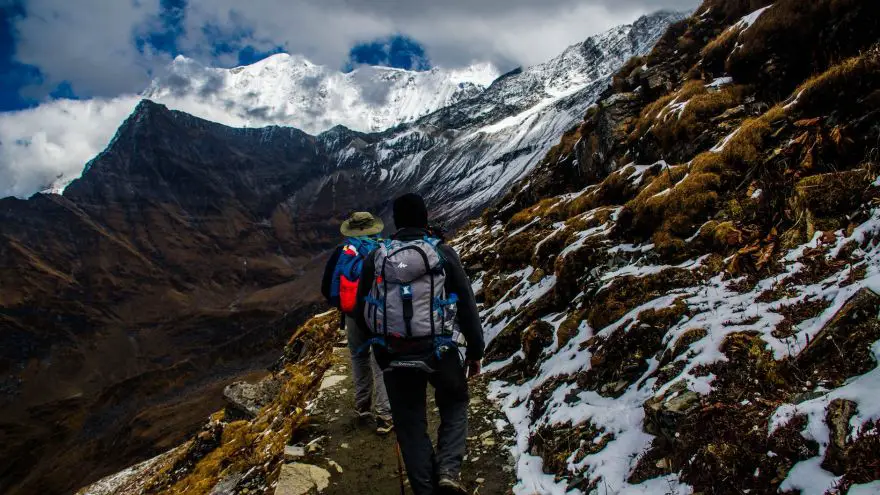 Hiking for Beginners: A Complete Guide
thegearhunt.com
Hiking for Beginners: A Complete Guide
thegearhunt.com
Hiking is a great way to get yourself immersed in and one with nature. You will use your own two feet for transportation and will carry only the day’s necessities right on your back. You will be able to discover just how beautiful nature can be. The really great part about hiking is that with a little bit of preparation and planning, it is something that nearly everyone can do.
A guide for beginners
If you have ever wanted to hike, but haven’t yet, there is no better time to do it than right now. You just need to start by doing the following 3 things:
- If you don’t want to go it alone, find a partner to hike with.
- Choose a location for your hike.
- Get the gear you need.
Locating a Partner to Hike With
Maybe you have friends who hike. If so, ask them if you can tag along. Many people are more than happy to share what they know. Maybe they will even let you borrow some gear and introduce you to their fave spots.
If you don’t know anyone who hikes, many towns and cities have clubs for hiking and they regularly schedule outings. There are even online groups that are a great way for you to find and partner up with other hikers.
 Solo hiking: When you get out and experience the great outdoors on your own, you can get a sense of adventure and freedom that can be difficult to find anywhere else. On the other hand, it can also be lonely and a bit intimidating at times. If you are new to the hobby, it is recommended that you find someone to go with you. If nothing else, that person will be on hand in case something happens, and you get injured. However, if your only option is to go it alone, begin with a short jaunt. Start with the more popular locations for hiking and be sure that there is always someone who knows where you will be and when to expect you back.
Solo hiking: When you get out and experience the great outdoors on your own, you can get a sense of adventure and freedom that can be difficult to find anywhere else. On the other hand, it can also be lonely and a bit intimidating at times. If you are new to the hobby, it is recommended that you find someone to go with you. If nothing else, that person will be on hand in case something happens, and you get injured. However, if your only option is to go it alone, begin with a short jaunt. Start with the more popular locations for hiking and be sure that there is always someone who knows where you will be and when to expect you back.
Choosing a Route
There are quite a few ways to locate a trail for hiking that will suit you perfectly:
- Websites and guidebooks are always great resources due to them supplying you with all of the information that you will need. They will include info such as:
- Whether or not dogs are allowed
- Features of the trail
- Sources of water
- Directions
- Gain in elevation
- Distance
- Trail difficulty
- And more.
Websites in particular will also be able to display reports from recent hikes that might give you a bit of insight as to what the trail conditions currently are.
- Keep your ear to the ground. If you happen to have anyone in your circle of acquaintances who hike, don’t be afraid to ask them for a couple of trail suggestions.
- Talk to some of the locals. You might call one of the local hiking organizations or clubs, or even call one of the rangers’ stations near your desired locale. Rangers, in particular, will have information like trail conditions that are up to date, and they are also great at suggesting trails for hikers at any level of expertise.
Tips for Choosing the Ideal Route
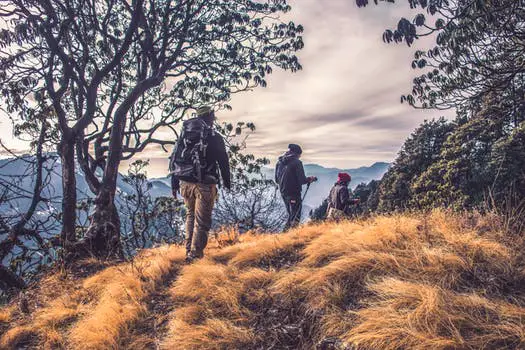
Before you begin to look for the ideal trail, it can be helpful to consider a few things. They include:
- The amount of time you have. Do you only have a few hours, or can you spend an entire day on the trails? How much time you have available can be a big factor in determining the route you take. Remember to always factor in the amount of time it will take to get to the head of the trail and back.
- Your level of fitness. Take an honest assessment of how fit you are or aren’t. It would be better to be able to enjoy your time hiking as opposed to suffering through one that you just aren’t physically ready for. Don’t worry though, there are trails and hikes for every fitness level.
- How far? Put some thought into things like how many hours and miles you will be comfortable hiking. The average pace for walking is around 3 mph, but that can vary depending on the elevation gain, terrain, and the amount of weight in your backpack.
- Elevation gain. This is something that can determine the difficulty of a trail. With a bit of experience, you will come to learn just how much you can handle comfortably. For example, on a mile of trail, if the gain in elevation is 1,000 feet, it is considered to be a bit steep. Additionally, for each 1,000 ft of gain in elevation, you should add an hour to the estimated time for your hike.
- Weather and time of year. Some hiking trails will not be able to be accessed in the first part of spring due to them being covered in snow. If you will be hiking in the fall, plan on the sun setting earlier so that you aren’t out in the dark unprepared. Also, you should always check on the weather before you head out so that you can pack and dress for whatever is in store.
- Some trails require that you do a bit more planning. As an example, imagine that you will be hiking a trail that starts in one place and ends in another. How will you get your car from the start of the hike to the end of it?
How to Choose Hiking Gear
One of the truly great things about hiking is that there isn’t a need for a lot of hi-tech gear that you will need to get out there and enjoy nature. You only need a few items for the hike and a desire for adventure before you are ready to get back to nature.
Top Ten Essentials
You can begin by ensuring that you have 10 essentials. These are comprised of clothing and gear that hikers need every single time they set foot on a trail. This collection is made up of items for:
- Emergency shelter
- Hydration
- Nutrition
- Repairs
- Fire
- First aid
- Illumination
- Insulation
- Sun protection
- Navigation
Footwear for Hiking
This is one of the more important things for you to choose from. It is also a choice that will be personal. Some of today’s hikers tend to prefer over the ankle boots that offer support. Others might choose trail running shoes that are lightweight. This choice can also be affected by the type of terrain you will be tackling. Trails that don’t have a lot of obstacles and are well-maintained might be good for shoes that are low cut and lightweight. However, rugged trails that feature streams, roots, and rocks might be served better by wearing sturdy boots.
Whatever your choice is, make sure that your shoes or boots are broken in well and very comfortable for walking long distances. Also, cotton socks are not recommended but synthetic or wool ones are.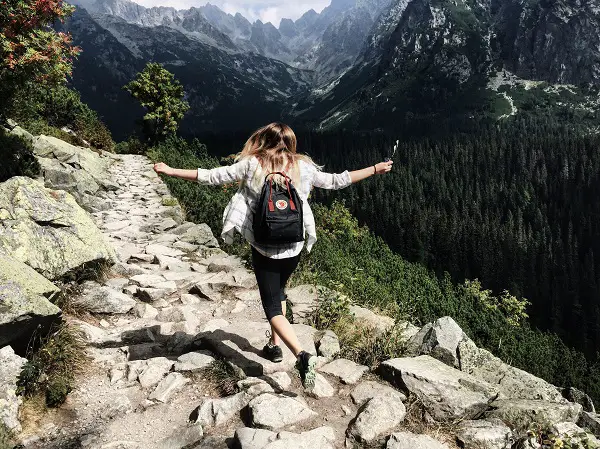
Clothing
When it comes to what to wear when you are hiking, choose fabrics that are moisture wicking and that dry quickly, like polyester or wool. Cotton can take a while to dry when it gets wet, so this should be avoided. You can actually consider your clothing as being separate systems.
- Base, next to skin layers. These should be made from polyester or wool and are most important when the weather is cool or cold.
- Hiking layers. This system would include things like a sun hat, sun shirt, t-shirt, and pants made from polyester or nylon.
- This one depends on the weather. You might need a warm pair of gloves and a hat, a fleece pullover that is lightweight, and a jacket or puffy vest.
- Rain gear. It is always wise to pack a jacket that is waterproof regardless of the forecast. If wet weather is expected, you might also want to pack some rain pants.
Backpack
A backpack is necessary so that you can carry all of your gear. If you are just going on a short hike on a trail that is close to home and are expecting the weather to be pleasant, a smallish daypack that has enough space for your layer of lightweight clothing, a couple of snacks, and your water should suffice.
For those times when you will be hiking trails that lead you farther into the great unknown, you will have a need for more gear, food, water, and clothing. Of course, this means that you will also need a bigger backpack.
Water and Food
If you are just getting started with this activity, it can be a bit of a challenge to determine just how much water and food you will need. A general recommendation as far as food goes is about 250 calories for each hour on the trail. For water, you should begin with about ½ liter for each hour of moderate activity as long as the temps are also moderate. Both of these amounts can vary depending on things like your body type, the rate of sweat, age, the weather, and how intense the trail is. When you get a bit of experience, you will find out just what you need.
Pro Tip: Always carry a bit more water and food in the event that your hike takes longer than what you expect.
Safety
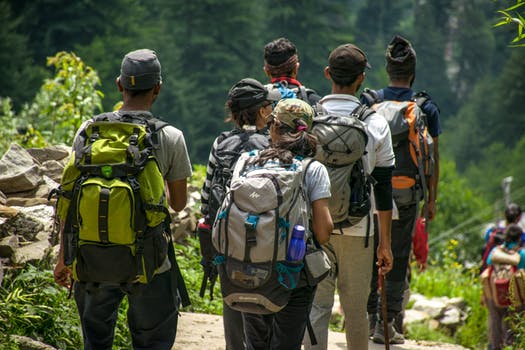 It is always a good idea to leave an itinerary with a family member or friend. You can also leave a note detailing your plan and route inside your car in case the unexpected happens and search and rescue people have to come out for you.
It is always a good idea to leave an itinerary with a family member or friend. You can also leave a note detailing your plan and route inside your car in case the unexpected happens and search and rescue people have to come out for you.
If you will be hiking alone or to locations that are quite remote, you might think about carrying a PLB (personal locator beacon) that will allow you to send for help if need be.
Etiquette on the Trail
It doesn’t matter if you are a rookie or have been hitting the trails for ages, you need to know and follow a bit of basic etiquette.
Right of way. Making sure that you follow the rules on the trails can ensure that everyone gets along.
- Hikers and hikers – Hikers who are heading uphill get the right of way. You might run across hikers heading uphill taking a breather while others pass them coming down, but it is always the choice of the uphill hikers.
- Hikers and bikers – People on the trails on bikes are supposed to give the hikers the right of way. That being said, because they tend to move more quickly than the hikers, it can often just be easier for the people on foot to step to the side until the bikers move past.
- Hikers and horses – Horses always have the right of way. If you find that you are sharing the trail with people on horseback, make sure that you give way to them when they pass and try not to make any sudden movements. A general rule of thumb is to get off the trail on the side going downhill while letting the horse pass.
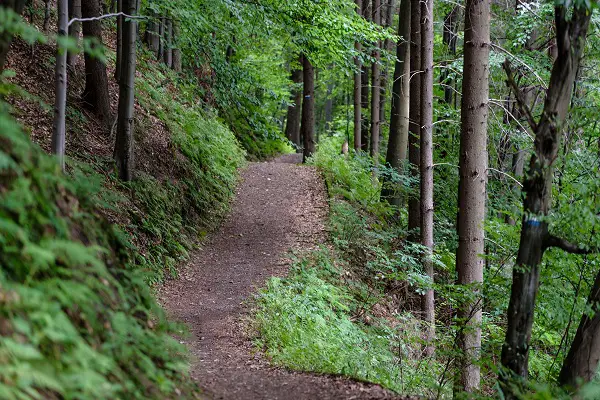
LNT (Leave No Trace). Most of us don’t have the intention of harming nature while we are in it, but we might not have the knowledge to preserve it, or we just overlook certain behavior. LNT gives us a few principles that provide us with guidance while enjoying nature in a way that is sustainable and avoids impacts from humans. These are:
- Prepare and plan ahead
- Camp and travel on surfaces that are durable
- Properly dispose of all waste
- Leave anything you find
- Minimize the impacts of campfires
- Respect all wildlife
- Be considerate of others
Hiking with Kids
Sharing the beauty and wonder of nature with kids is an experience that is special. Almost any age child will be able to go hiking, from babies still in carriers to those who can use their own feet to get up the trails. Just make sure that you keep them fed, dry, and warm. Also, when kids are on the trek, choose shorter trails and stop frequently to check out animals, rocks, plants, etc.
Sources
- Backpacking, Backpacking & Hiking Guide for Beginners
- HikingGuy, Hiking for Beginners: 11 Essential Tips
- TheTrek, 11 Common Beginner Mistakes in Backpacking and Hiking















